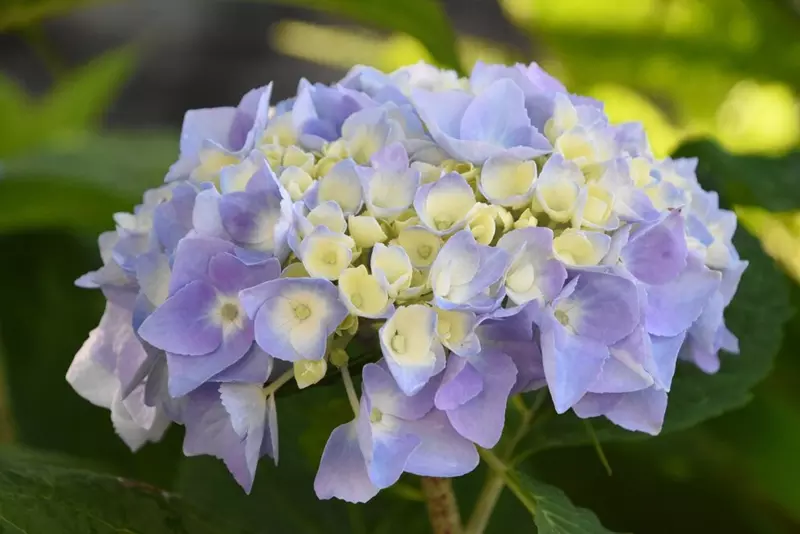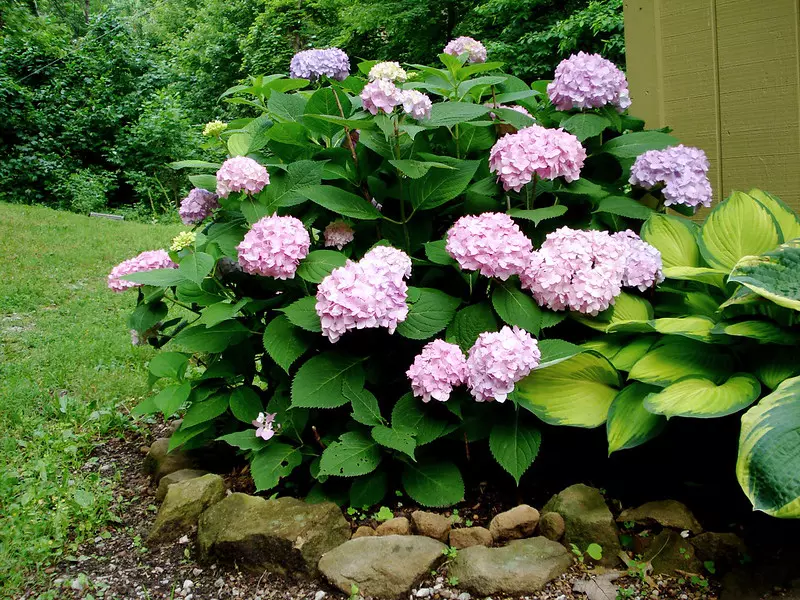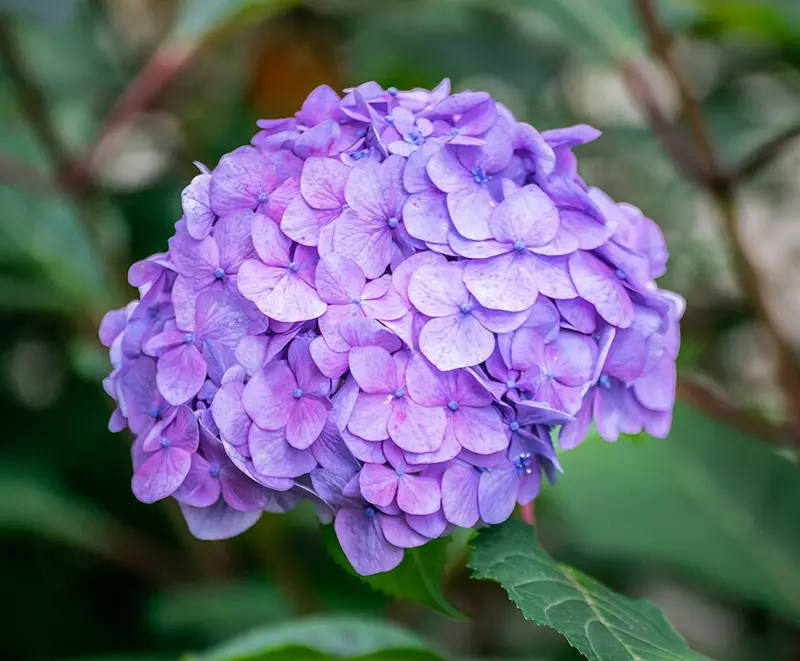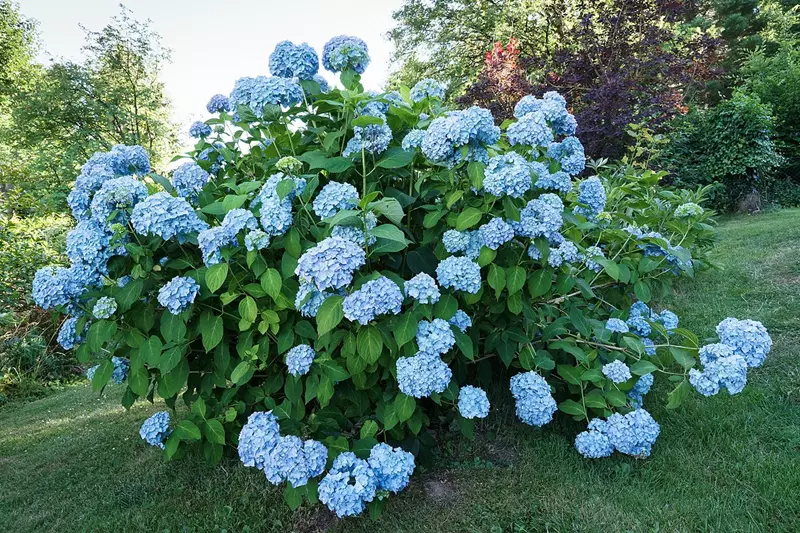
The Ultimate Guide to Hydrangea macrophylla (Garden Hydrangea)
A complete guide to Hydrangea macrophylla, including planting, pruning, soil adjustments, eco-friendly pest management, propagation, and garden design ideas.
Read MoreThe Hydrangea macrophylla 'Endless Summer' is a remarkable cultivar renowned for its ability to bloom on both old and new wood, ensuring a continuous display of vibrant flowers from late spring through autumn. This unique characteristic, combined with its exceptional cold hardiness, makes it a favourite among gardeners in the UK and the USA.

Hydrangea macrophylla 'Endless Summer' is a popular choice among gardeners for its unique reblooming ability and vibrant blooms. However, it's essential to understand its advantages and disadvantages to determine if it's the right fit for your garden.
This hydrangea variety is ideal for gardeners who:
Hydrangea macrophylla 'Endless Summer' offers numerous benefits, including reblooming capabilities and adaptability to various soil pH levels. However, it requires attentive care to address its specific needs. By understanding its pros and cons, gardeners can make an informed decision about incorporating this hydrangea into their landscapes.
Hydrangea macrophylla 'Endless Summer' is celebrated for its ability to bloom on both old and new wood, offering gardeners a prolonged flowering season. To ensure its successful establishment and vibrant growth, proper planting techniques are crucial.
Before planting, it's essential to thoroughly hydrate the plant's root ball. Immerse the entire potted hydrangea in a bucket filled with water, ensuring the pot is fully submerged. Hold it underwater until air bubbles cease to rise, typically after 1–2 minutes. This process allows the root ball to absorb sufficient moisture, reducing the risk of transplant shock and promoting healthy establishment.
Hydrangea macrophylla 'Endless Summer' is renowned for its ability to bloom on both old and new wood, providing a continuous display of flowers from late spring through autumn. Proper care is essential to maximise its blooming potential and ensure plant health.
Maintain consistently moist soil without waterlogging. Water deeply once or twice a week, increasing frequency during hot, dry periods. Applying a 5–8 cm (2–3 inch) layer of organic mulch helps retain soil moisture and regulate temperature.
'Endless Summer' thrives in organically rich, well-draining soil that retains moisture. Incorporating compost or well-rotted manure enhances fertility and drainage. Soil pH influences flower colour: acidic soils (pH below 6.0) yield blue blooms, while alkaline soils (pH above 7.0) produce pink flowers. Adjust soil pH accordingly to achieve desired bloom colour.
Prefer partial shade, with morning sun and afternoon shade. In cooler climates, they can tolerate more sun, but in hotter regions, excessive sun can cause leaf scorch and wilting. Ensure protection from harsh afternoon sun to maintain plant vigour.
Apply a balanced, slow-release fertiliser in early spring as new growth emerges. A second application in mid-summer can promote continued blooming. Avoid over-fertilisation, as excessive nitrogen encourages foliage growth at the expense of flowers.
Prune immediately after the first flowering in late summer to preserve buds for the next season. Remove spent blooms and dead or weak stems, cutting back to the nearest healthy bud. Avoid heavy pruning in autumn or early spring, as this can remove developing buds.
Apply a 5–10 cm (2–4 inch) layer of mulch around the base to insulate roots during winter. In regions with severe winters, cover the plant with burlap or horticultural fleece to protect against frost damage. Avoid late-season fertilisation to prevent tender new growth susceptible to frost.
Monitor for common pests such as aphids and spider mites. Use insecticidal soap or neem oil for control if infestations occur. Ensure good air circulation to prevent fungal diseases like powdery mildew. Water at the base to keep foliage dry and reduce disease risk.
Hydrangea macrophylla 'Endless Summer' is cherished for its ability to bloom on both old and new wood, providing a prolonged flowering season. Proper pruning is essential to maintain plant health and ensure abundant blooms.
Contrary to common misconceptions, the ideal time to prune 'Endless Summer' hydrangeas is in spring, after the last frost has passed, typically around March. Pruning in autumn is discouraged, as it can make the plant susceptible to frost damage, potentially harming the buds that would produce the next season's flowers.
If you plan to propagate 'Endless Summer' hydrangeas through cuttings, select healthy, non-flowering stems. Be aware that removing these stems may reduce flowering on the parent plant for that season.
Propagating Hydrangea macrophylla 'Endless Summer' allows gardeners to expand their collections and share plants with others. The primary methods for propagating 'Endless Summer' include stem cuttings, layering, and division.
Propagating through stem cuttings is a popular and effective method. The optimal time for taking cuttings is from late spring to early summer when the plant is actively growing.
This method is widely used due to its simplicity and high success rate.
Layering involves encouraging a low-growing stem to develop roots while still attached to the parent plant. This method is straightforward and has a high success rate.
Layering is particularly useful for propagating a few new plants without the need for special equipment.
Division involves separating an established plant into multiple sections, each with its own root system. This method is best suited for hydrangea species that naturally form colonies, such as Hydrangea arborescens and Hydrangea quercifolia.
While division is less commonly used for 'Endless Summer' hydrangeas, it can be effective for other species that spread through suckers.
It's important to note that 'Endless Summer' hydrangeas are patented plants. Propagating them without permission for commercial purposes is prohibited. However, home gardeners can propagate them for personal use.
Propagating Hydrangea macrophylla 'Endless Summer' can be accomplished through stem cuttings, layering, or division. Each method has its advantages and can be chosen based on the gardener's experience and resources. By following the appropriate steps and considering legal guidelines, gardeners can successfully propagate this beautiful hydrangea variety.
Hydrangea macrophylla 'Endless Summer' is renowned for its ability to produce blooms in varying colours, primarily influenced by soil pH. This characteristic allows gardeners to modify and enjoy a spectrum of hues from the same plant.

The flower colour of 'Endless Summer' hydrangeas is directly affected by the pH level of the soil:
This phenomenon occurs because soil pH influences the plant's uptake of aluminium, which interacts with pigments in the flowers to produce different colours.

Gardeners can modify soil pH to attain specific flower colours:
It's important to note that white-flowered hydrangeas do not change colour with soil pH adjustments, as they lack the pigments responsive to pH variations.
Regular soil testing is essential to determine current pH levels and guide amendments:
Maintaining the desired pH range requires ongoing attention, as factors like rainfall and fertiliser use can alter soil acidity over time.
Hydrangea macrophylla 'Endless Summer' is celebrated for its repeat blooming and vibrant flowers. However, like all plants, it can encounter specific issues that may affect its health and appearance. Understanding these common problems and their solutions is essential for maintaining a thriving hydrangea.
One of the most common concerns is the lack of blooms. This can result from:
Leaves turning yellow or exhibiting other discolourations can indicate:
Common pests affecting 'Endless Summer' include:
Fungal infections can manifest as:
Environmental factors can lead to:
By recognising and addressing these common issues, you can ensure that your Hydrangea macrophylla 'Endless Summer' remains healthy and continues to provide beautiful blooms throughout the season.
'Endless Summer' hydrangeas are remarkable for their ability to bloom on both old and new wood, ensuring continuous flowering from late spring through autumn. This reblooming trait, combined with excellent cold hardiness, makes them a favourite among gardeners.
The flower colour is influenced by soil pH:
To adjust the colour, modify the soil pH. Adding aluminium sulphate lowers the pH for blue blooms, while garden lime raises the pH for pink blooms. Changes may take a growing season to become evident.
Hydrangeas require consistently moist soil, especially during dry spells. Water deeply once or twice a week, ensuring the soil remains damp but not waterlogged. Mulching helps retain moisture and reduces watering frequency.
Apply a balanced, slow-release fertiliser in early spring as new growth begins. Reapply in mid-summer if needed. Avoid excessive fertilisation, as too much nitrogen can promote foliage growth at the expense of flowers.
While they can tolerate full sun in cooler climates, they prefer morning sun and afternoon shade in hotter regions. Excessive sun exposure can cause wilting and scorch the leaves, so ensure adequate watering if planted in full sun.
Prune immediately after the first flowering in late summer to preserve buds for the next season. Remove spent blooms and dead or weak stems, cutting back to the nearest healthy bud. Avoid heavy pruning in autumn or early spring.
They thrive in nutrient-rich, well-drained soils with a slightly acidic to neutral pH. Incorporating organic matter, such as compost, enhances soil structure and fertility.
Apply a 5–10 cm (2–4 inch) layer of mulch around the base to insulate roots. Avoid pruning before winter, as spent flowerheads offer natural frost protection. In severe climates, cover the plant with burlap or horticultural fleece.
Possible reasons include improper pruning, insufficient sunlight, or excessive fertilisation. Ensure the plant receives at least 4–6 hours of sunlight daily and avoid cutting back new wood where flower buds develop.
This hydrangea typically grows to a height and width of 1–1.5 metres (3–5 feet). Its compact size makes it ideal for smaller gardens, container planting, or as a border shrub.
For more detailed information, consult reputable gardening resources or local extension services.

A complete guide to Hydrangea macrophylla, including planting, pruning, soil adjustments, eco-friendly pest management, propagation, and garden design ideas.
Read More
Discover the beauty and care techniques for Hydrangea macrophylla 'Nikko Blue'. Learn how to grow, maintain, and enjoy this stunning blue-flowering hydrangea.
Read More
Discover a comprehensive guide to Hydrangea macrophylla 'Twist and Shout'. Learn about planting, care, pruning, and companion plants for vibrant blooms.
Read More